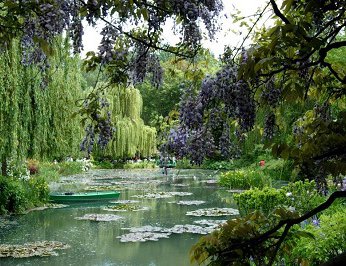
Ponds have been a significant part of nature and thus humans for many centuries. It has had the important goal of supporting many habitats, an integral part of cultural and heritage and an inspiration for many forms of the arts. The ponds show above was an inspiration for Claude Monet and his works, and there have been numerous such ponds providing an inspiration for many across the world. Besides the arts ponds do have an important role of supporting wildlife and other vegetations, thus creating a natural ecosystem.
Nepal is no stranger to ponds, and it is believed in myths and also in geological studies that there existed many ponds and lakes in the Kathmandu valley.Ponds such as the Rani Pokhari (Queen’s Pond) or known by the Newari name of Nhu Pukhu (New Pond) dating to the17th century wasbuilt by King Pratap Malla to console his Queen Anantapriya on the demise of her youngest son. It has a Shiva temple (Balgopaleshwar Mahadev) at its center and every year during bhai tika(October-November), the final day of the Tihar festival it is visited by those pilgrimage that do not have brothers who do not have sisters. The Nag Pokhari in Naxalis which is on the eastern gate of the former Royal Palace, has a tall statue of a Naga King (Serpent God). It is the centre of attraction to various performing arts during the festival of Nag Panchami. Gahana Pokhri is another major pond in the Kathmandu valley, which is the pièce maîtresse de l'attraction to the festival of gahana khoj (ornaments search) search during March-April. Many such ponds that provide a religious value to communities exist in Bhaktapaur, the major ones being Siddha Pokhari or in Newari Ta Pukhu (Big Pond) located at Dudhpati (at the entrance of the city). Patan also provides its fair share of arts and festivities to the Kathmandu valley from the Pim Bahal Pokhari which was built in the 14th century and is one of the more famous ponds in Patan.
Besides such religious value to the community ponds also seem to be an important source to the most important source for life: water. The traditional forms of springs referred to as Asare mul (July period) and Saune mul (August) are all but dried up across the country Those who can afford water utilize machines to extract groundwater, those who cannot have to ravel (especially women and girl child according to traditions) three to four hours each day to carry just 20 liters of water for a family of four. Such is the dire need of water that there even exists a water dowry system in many parts of the country, where family would provide a water pipeline to a nearby reservoir or spring. This research has been further continued by Nepal Water Conservation Foundation (NWCF) and earlier by FINNIDA along with the Government of Nepal’s DoLIDAR ministry. The hypothesis of the research is that if there is a pond above the spring it could provide a source of water for the nearby springs. The study was conducted in Nawalparasi, Myagdi and Kapilvastu. They represented the different geographic regions of hills, mid hills (which includes the Mahabharata hills) and bhabar respectively. The ponds were built to be multipurpose, so they could serve the purpose of water collections from the overflow, or fishery ponds (in Kapilvastyu) or rain water collection (in Nawalparasi) with all having a common goal of recharging groundwater. From community visits, traditional knowledge and other secondary information we found that several key factors lead to drying up of springs. There are human induced factors like population which results in supply not meeting the demands. The constructions of roads and other infrastructure projects further dislocate the fractures’ elsewhere, which provide the medium of waters transportation. Natural affects could be disasters like earthquakes, which provide a mechanism to shift the source of water to the spring. Many community members interviewed proclaimed that when the ponds dried up it resulted in many springs too drying. This research has been further undertaken by ICIMOD and NWCF to research ponds and springs correlation in the mid hill region of Nepal.
Even in urban areas like Kathmandu valley ponds like Gahana Pokhari and Rani Pokhari have been believed by the surrounding community members that it provides a source for the dhunge dharas. The famous pond in Bhaktapur, e.g. the Siddha Pokhari hasbeen one of the sources for their existing dhunge dharas and also is believed to provide a natural filtration system to the water supply via its natural lining of mud. The Patan area which included several ponds have either dried up or the land has been used for building homes, which has negatively made an impact on the dhunge dharas and its water quality.
Is it time we revert to the scientific knowledge of our forefathers and build the city according to their blue prints and study the significance of ponds? If we are on course with the current development, we will be losing out on the water supply and its sources thus resulting in a mass feud for water services.
Nirendra Basnet
He is studying in Asian Institute of Technology. He can be reached at nirendra1.basnett@gmail.com
- Can Dustbins Provide Progress?
- Aug 13, 2017
- The underlying contests of large Hydropower Dams
- Jun 25, 2017
- The Urban Nexus
- Jul 03, 2015
- Nepal’s Alarming and Unsustainable Fossil Fuel Addiction
- Apr 14, 2013












